Thesis & Background
The body of work that I will be focusing on is Social Graces by Larry Fink. This book juxtaposes the social life of the wealthy in New York against pictures of rural life in Pennsylvania, as if to judge the wealthy’s lifestyle. Fink admitted to the judgmental process that went into his book. In an interview with Lens he describes that he “went into these very voluptuous and elegant bourgeois circumstances, and I would judge these people as if they were the enemy” (Teresa 1).
Critics and historians acknowledge the value of showing a leftist view of the rich and the artistic juxtaposition brought by pictures of rural America. However, critics also state that the work feels forced in a way that speaks most “about the artist’s preconceptions” (Johnson 1). This criticism is validated by the skewed perspective of his Jewish upbringing, which drove him to see the divides in society. When talking about his life Fink Describes that he “came from a family of left-wing activist people” (Fink 0:12). His viewpoint as an outsider along with the influence of his politically active Jewish mother drove his photography to criticize the wealthy, capturing their careless lifestyles.
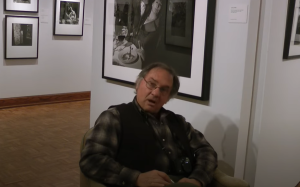
His photography was innovative, as he takes a unique perspective by photographing as an outsider in both the rural and the bourgeois sides of society. Through his lens he introduces a divisive way of viewing the social classes of the 70s and artistically uses juxtaposition to display his skewed political opinions. In my work I hope to honor and explore the theme of socioeconomic divides and the criticism of materialism that Fink’s work presents.
Social Graces drew me in as being a first year out of state student I related to the juxtaposition of social cultures that I saw in Finks work. His work evokes a level of judgment of the world and makes me think about the differences of the classes that I am surrounded by. His position as a Jew pushes him to look at the largely unseen rural working classes and highlight them. Being Jewish and a stranger to the nature of this college and the state, I have a unique perspective which allows me to view largely different and unfamiliar groups at the same time. The class divide presented by Fink is something I find myself viewing frequently while in Michigan. I hope to juxtapose the partying college students lavishing in their taste of freedom with normal middle-lower class Michiganders living out their lives.
Just as Fink captured the wealthy and the working class, I will display the highly dressed college students juxtaposed by normally clothed Michiganders. In this way I will mimic the way Fink displayed class divides in his work showing the excess of the wealthier students and the humbler situation of the working class. In particular, Fink as a photographer plays with the positioning and eyes of his subjects and how this demonstrates their connections. I hope to honor and mimic this method in my work to present the theme of the excess and disconnect within the higher classes as opposed to the authentic bonds of the less privileged. I believe this theme still exists and I seek to show that the excess and materialism of college parties results in lesser human connections.
As class differences continue to widen, Finks work only becomes more relevant. To hone in on my theme three photos from Social Graces I will explore are “Gallery Opening NYC 1974”, “Studio 54. 1977,” and “Sabatine-Miller Grad Party, 1977.” I want to focus on imitating these photographs as I believe that they are where Fink best displays his themes and uses eye contact and body language to contrast the wealthy and the poor in a critical way. By considering the iconic juxtaposition of Social Graces I will present my own view on the severity of Michigan’s class divides. Using Fink as inspiration, my photographs will argue that the connections built by wealthier university party culture are disingenuous when compared to the familial bonds of the working class.


 Fink “Studio 54. 1977” Fink “Gallery Opening, NYC 1974” Fink “Sabatine-Miller Grad Party, 1977”
Fink “Studio 54. 1977” Fink “Gallery Opening, NYC 1974” Fink “Sabatine-Miller Grad Party, 1977”
Methodology
The subjects and opinions of Fink’s photography were clear. He exclusively focused on the wealthy parties of New York City and the home life of rural Pennsylvania. He viewed these two different social settings as a stranger, by photographing the interactions of people at the family events of the working class and the parties of the wealthy. All of his images focus directly on people having them fill almost the entire frame, suggesting the social focus of his photography. Throughout Social Graces, he juxtaposes and compares the classes to further display the great divides in our society. While Fink was not interested in staging his photographs, he very selectively photographed the rich at their lows.
Finks focus was on capturing his biased perspective through moments he saw, and as such he incorporates both stillness and motion. He also makes the working class more aware of his presence, making them more likely to perform and pose for his camera. In this way there was a discrepancy in the way he photographed his two groups of subjects. Fink plays with his subjects body language and eyes showed the strength of their connection or their shallowness. His biased photographing style clearly paints his biased perspective. By taking selective photos he forces his negative perspective of the wealthy onto the viewer.
I will take black and white photos of college party culture and middle class Michiganders to capture similar contrasts to Fink. As I am new to both Ann Arbor and Michigan I will be able to take the perspective of a stranger in both of these settings. To add Fink’s point of view to my photography I will focus on being hyper critical of college students and use my phone camera to be unnoticed. I will look for the disconnections between parties and their reliance on the materialist experience of nice parties to socialize. On the other hand, I will take more flattering and intimate photos of the lower middle class. By emulating Fink I will be able to understand the relationships formed within polar social classes and make the claim that the connections of the working class are more genuine then those of partying students. Additionally I tried my best to take my time as Fink talks about in an interview with time magazine, his photographing style is very purposeful and as such I tried to not take too many photos at one time(Fink 1:18).
To emulate the theme and style of Social Graces best I plan to spend the upcoming week taking multiple photographs of college students at tailgates and other social events. I will take these using my phone in order to be unnoticed, and select only the ones that seem to capture shallowness. On the other hand, while visiting the working class part of my family in Lansing and Grand Rapids I will take photos of family gatherings and select ones that most sympathetically capture their connections. Specifically, I will mainly focus on photographing Thanksgiving as I believe that this holiday will best present the strong bonds of my family. By using this biased method I will imitate the perspective of Fink at the time of Social Graces. By focusing on photographing two vastly different groups with these methods I will be able to capture similar photos to the two main types of photographs used in Social Graces. Below are some examples of Finks photos of the wealthy and his opposing photos of the working class.
Fink’s Critical photos of the wealthy:
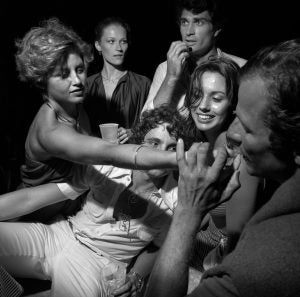
 Fink, “Peter Beard and Friends” Fink, “Studio 54,” NYC May 1977
Fink, “Peter Beard and Friends” Fink, “Studio 54,” NYC May 1977
Fink’s Sympathetic photos of the working class:
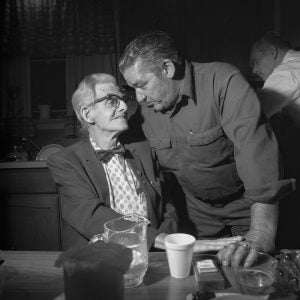
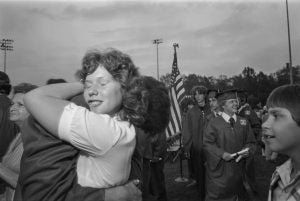 Fink John Sabatine and His Father in-Law Fink Graduation Bangor High School, June 1981
Fink John Sabatine and His Father in-Law Fink Graduation Bangor High School, June 1981
Photo Analysis
College Party Scene Photos:
Working family gathering photos:
Selected photos:
 Salinsky, “End of the Night” 2022
Salinsky, “End of the Night” 2022
Salinsky, “Reese’s 4th Thanksgiving” 2022
Slide Show of My Work:
Slide show of Finks work:
Analysis
There is a distinct difference analyzing a photographer through simply viewing their photography, and through imitating their photography on your own. Being behind the lens while taking photos of similar style to Social Graces, helped me understand the photographer himself rather than just his message. Through taking my photos I better understand the process and the message of Finks photography.
When going to largely unfamiliar gatherings and taking photos, I was forced to look for and capture moments and interactions. I can now understand how Fink searched for and picked the moments he wanted to capture. A large gathering creates a space where there are many actions occurring all at once and Fink could only choose a few. The difficulty I had deciding which scenes I would capture, helped me realize the selectiveness of Finks method and the intentionality of each photo.
After taking my own photos I was able to see how non-abstract Fink’s photos were. Looking back at his work I was impressed by his ability to focus so closely on what peaked his interest. Every photo centers around people and displays social divides rather than focusing on being “artistic.”
Looking into Finks experience as a photographer, particularly the influence of the photo league, I discovered a new meaning of his work. Model, a well known photographer who had a direct influence on Fink is stated to have “derived a deep interest in society” (Sussman 8). This interest seems to have flowed throughout the photo league and after imitating Fink’s work I see how deeply he was invested within documenting American society.
His work was not meant to simply bash the upper class, but instead was almost a form of documentary of the vast social differences in the US. While it did come from a biased lens, I respect Fink’s ability and drive to capture the essence of what the working and upper classes were at the time.
I think that if anything was missing from my photos it would be the skill and lighting that Fink brought into his photography. Many of his photos are lit that makes the subjects of the photo the clear focus. The background in some perfectly fades to black making it impossible not to direct your gaze towards the human interactions, or lack thereof, in the image. While some of my photos have decent lighting none approach Fink’s level of skill. Not being able to replicate this did help me notice the lighting he went for in his photos which further emphasizes his effort to document and focus on the people within each social class.
Fink, in addition to his technical skill, had the ability to find moments that perfectly fit his biases and beliefs. I struggled with taking photos that didn’t feel crowded and where the subjects were fully in focus. I gained a level of respect for how Fink was able to navigate through unfamiliar gatherings and take photos that displayed his viewpoints about the wealthy and the middle class.
The hardest thing about emulating Fink’s photography was my lack of photographic skill along with my different viewpoints. As Orvell states photography possesses an “inescapable element of point of view” (Orvell 14). As my opinions differ on the upper classes, I found that my photography carried a level of disingenuousness. I did not truly believe in the viewpoint I was trying to capture and my personal connection to my family and fellow students posed a great challenge. While this did make me struggle, I also was able to truly realize how strong Fink’s opinions on the upper class must have been at the time, for him to capture so many genuine and unflattering moments.
While I did struggle sharing an exact viewpoint with Fink, I believe that what most benefited my photography was the similarities of experience that I had to him. We both were raised Jewish in liberal households and like Fink I have always been aware and worried about class divides. I was able to capture a similar style of photography and better understand Fink partially due to the fact that I am a stranger to the culture of Michigan. I felt as though I felt a semblance of what Fink felt when navigating the social events he went to which made my photos feel more genuinely connected to his.
I was surprised by how some of my photos really did turn out well and how looking back at them a lot differed greatly from the actual moment I captured. When I was selecting my photographs I noticed that many of them barely resembled the actual moments that they were taken from. I also was pleasantly surprised by the backgrounds in many of my photos looking more aesthetically pleasing then I remembered them to be.
My approach to picture taking did not evolve all that much throughout my photo taking. I went in knowing the types of scenes that I wanted to capture. At college events I knew I was looking for moments of disconnection and where the material distracted students from the actual people around them. Alternatively, at family gatherings I looked for authentic connections and close physical proximity.
Although my general approach was unchanged, cell phones definitely altered the scenes that I expected my photos to display. In both settings it is astonishing how many people are on their phones at social gatherings. This made it easier to take photos at college parties as having so many people distracted by their phones creates a lot of disconnection, but at family events the same issue occurs. While my general approach to photo taking did not change, the scenes I had to find to capture were not always the ones I expected to find.
I think the amount of control and the ability to capture the moments that you want while you are behind the lens is really liberating. Being in relatively large gatherings gave me a multitude of scenes to capture with my photography. This ability to choose allowed me to dictate how the events I went to would be presented to others. While all of my photos were of real moments they carried my opinions and perspective through how I decided to compose the angle and scene. As Sekula states, “It would be a mistake to identify liberal and ‘concerned’ documentary entirely with realism” (Sekula 108). It was liberating to be able to bend the truth and display documentary-like photographs in ways that lacked pure objectivity.
One such moment where my photos misrepresented reality, was my “End of the Night” photo. In which the main subject, the girl on the chair looks very out of it. In reality she was totally fine that entire night. She was in a deep conversation with the boy next to her just a couple of seconds before I took the photo. She only had her eyes closed for about a second and I simply got lucky that I was able to capture a photo that fit the theme I was looking for. The power that biases it made me consider how much Fink’s photography genuinely captures upper class culture and how much is simply biased coincidence.
Another photo that I believe illuminates Fink’s style is “Reese’s Fourth Thanksgiving,” which displays the close familial moments Fink captured. The whole family is clearly gathered around Reece, with the three women gathered around him clearly oriented towards him. there attention and connection contrasts and displayed a more caring relation than I had seen at any of the parties I had gone to. It helped me really understand how the difference between taking photos at family gatherings and parties created an extra level of bias as the wealthy parties cannot have the familial connections that they are juxtaposed against.
Taking my own photos allowed me to understand Fink’s biased mindset. Additionally, I was able to reflect on his efforts to document society in the way that fit his predetermined opinions. While I believe that Social Graces is still a wonderful and impactful photo book there is definitely a level of misinformation within the images. While photography has a level of objectivity I was able to learn how the impact of the photographer can be just as great as the actual subjects of a photo.
Conclusion
My final project captured the two polarized cultures of the college party scene and family gatherings. After taking my own photos and reflecting upon Fink’s work I have obtained a deeper understanding of how his photographs represent and document his interpretations of class divides. Through his Jewish experience Fink was led to view the world from a leftist standpoint. Taking my own photos I further connected with my own identity and began to see Fink’s photos as uniquely Jewish, rather than simply photos that were taken by a Jew.
Throughout this project I began to see the political and Jewish factors of Fink’s lens as synonymous rather than to distinct parts of his photos. Taking photos as a Jewish individual, I was able to understand the leftist basis of Jewish photography. Being an outsider in a marginalized cultural group led my photos to focus on those I saw on the margins of society. Similarly to Fink, my identity led me to subconsciously empathize with the inclusivity and connections of my working class family. In this way I better understand Fink’s stance and the reason for it on social inequalities.
The central claim I made originally when considering Fink was that his photography set out to judge the wealthy. I came to better understand why his photographs seemed judgemental and how Jewishness impacted the view of society that is shown within Social Graces. I think that Fink’s and my photography did display the excess and disconnect in the upper class that my thesis claimed. The photos that Fink and I took of parties often show people looking away from each other and feel disconnected whereas our photos of family gatherings portray much greater intimacy.
My thesis did not change, but my exact view on the way Fink photographed the upper classes slightly shifted. I originally believed that Fink was solely judging the upper classes. After taking and reflecting on my photos however I’m not sure if this is totally valid. While there is definitely a level of judgment there’s also some curiosity and sympathy that goes into taking photos of people at some of their worst moments.
While there were legitimate differences with doing this project in the 21st century, I think the core of what Fink saw in the 20th century still remains. Seeing this similarity helped me realize how deeply ingrained the great societal divisions between the classes in the US are. I began to think of Social Graces as a documentary of American capitalist culture in general, rather than just the culture of a specific time period.
Through mimicking Fink I gained knowledge of not only how he took the photos but the larger implication and message that the photo book reveals about classism and the subcultures of the United States. Class divides have only continued to widen, and due to this imitating Fink’s photos still gave me great insight into what drove his perspective and the overall message that materialism breeds weaker connections.
Sources
Fink, Larry. “Larry Fink on Why He Chose Photography.” YouTube, YouTube, 25 Feb. 2011, https://www.youtube.com/watch?v=JrESNNzgQbU.
FInk, Larry. “Larry Fink on Photography: ‘If You Don’t Take a Chance, You Don’t Get a Chance’ | First Take | Time Magazine.” YouTube, YouTube, 16 Mar. 2017, https://www.youtube.com/watch?v=Qt9M2aQAFT0&t=40s.
Johnson, K. (2001, September 28). Larry Fink — ‘Social Graces’. The New York Times. Retrieved October 28, 2022, from https://www.nytimes.com/2001/09/28/arts/art-in-review-larry-fink-social-graces.html
Orvell, Miles. American Photography. Oxford University Press, 2004.
Sekula, Alan. “On the Invention of Photographic Meaning,” in Thinking Photography, ed. Victor Burgin (1982), 84-109.
Sussman, Elizabeth. Lisette Model Phaidon 55, 2001.
Teresa, A. (2011, January 6). A moment with Larry Fink. The New York Times. Retrieved October 28, 2022, from https://archive.nytimes.com/lens.blogs.nytimes.com/2011/01/06/a-moment-with-larry-fink/

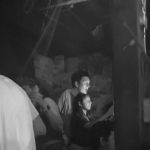


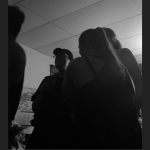
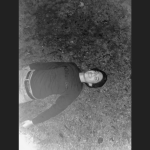
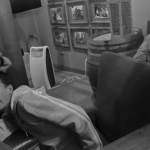
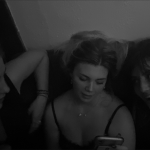
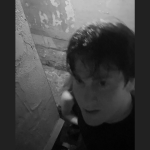
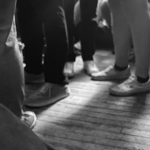
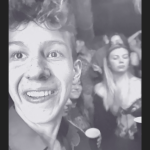




















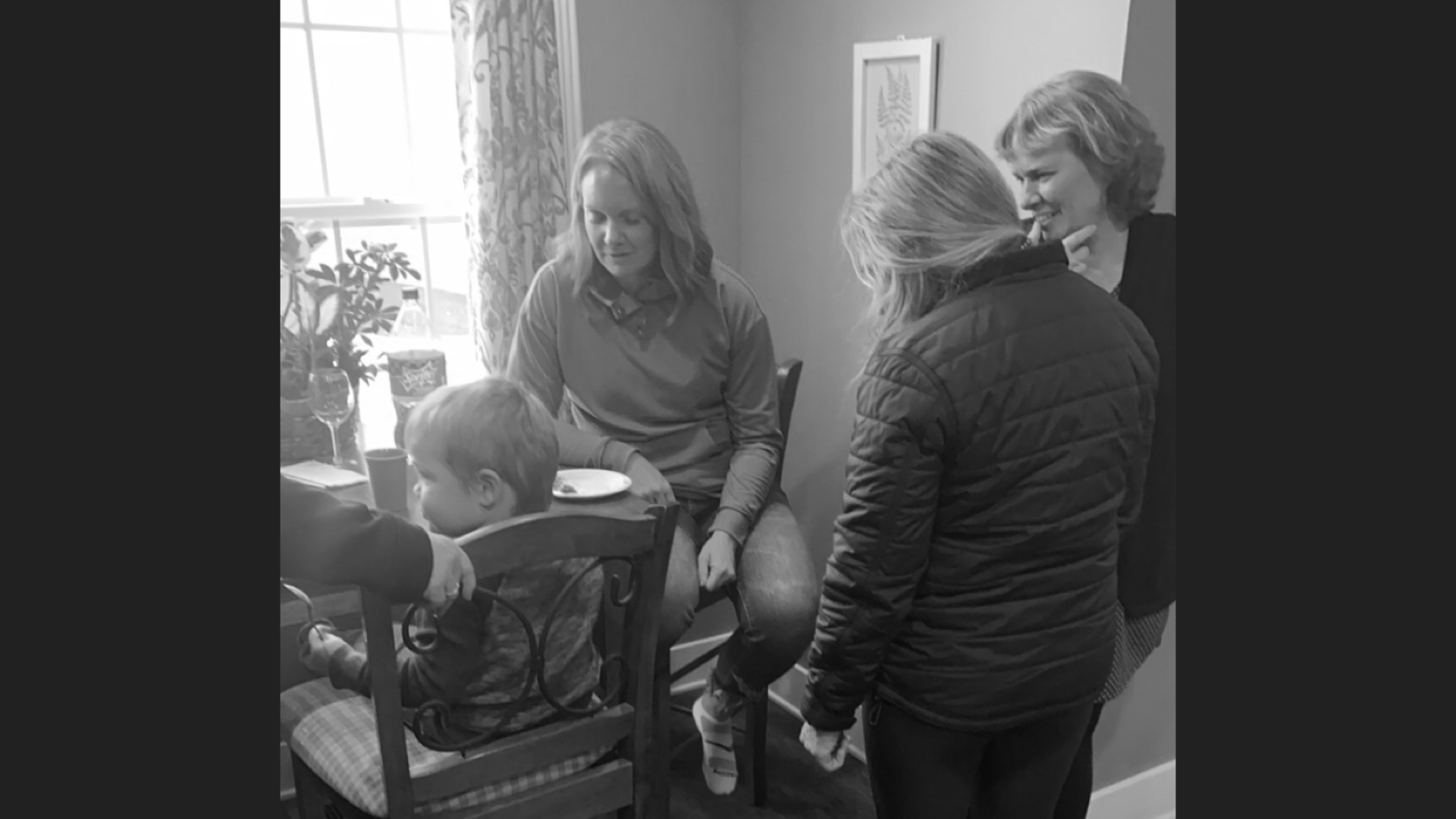
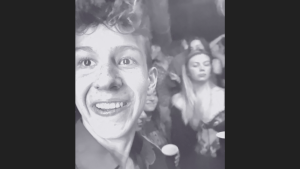
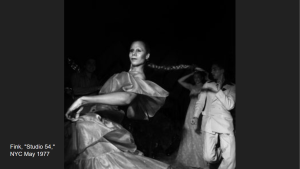

Ike,
This is a very thoughtful discussion of Fink’s Social Graces. I like the connections that you make to his Jewish upbringing that influenced his perspective, especially his Marxism, as well as the criticisms that were articulated of the book. The Johnson review does mention another item: the way each photograph appears to be a short story. You might consider the implicit narratives embedded in Fink’s photographs, as well as in your own.
Your proposed plan of work to contrast the well-to-do students on campus with more ordinary Michigan residents from middle- and working-class backgrounds is very good. I think that you are wise to take advantage of your outsider perspective to campus.
Please put Larry Fink’s name next to each photograph along with the title.
DDM
Ike,
You are right to seek to emulate Fink’s biased approach to photographing the rich and the middle-class since that gets to the heart of what he wanted to accomplish. I think that Thanksgiving should give you an opportunity to capture sympathetic portraits of family members in a context that resembles Fink’s photographs of his rural neighbors. The photographs that you chose of Fink’s do a good job presenting his own perspective. One is much more likely to be attracted to John Sabatine and His Father-in-Law than to Peter Beard and Friends.
DDM
Ike,
Please upload these photos of partying again so that I can view them as more than thumbnails. You can look at Adam’s pictures to see how he did it.
DDM
Ike,
Great reflections on the entire process of photographing like Fink. It’s clear that you learned a lot, both from the difficulties you faced and from the successes you achieved. You also recognized that the process of taking photographs–even when you know what you want to take–and the process of choosing photographs is different. We get to see what you chose, which is important. I’m glad that you found being behind the lens to be liberating. It gives you a taste of what a photographer like Fink experienced.
DDM
Really strong conclusion. Well done.